Fatigue life of 3D-printed porous titanium dental implants predicted by validated finite element simulations
- PMID: 37636001
- PMCID: PMC10449641
- DOI: 10.3389/fbioe.2023.1240125
Fatigue life of 3D-printed porous titanium dental implants predicted by validated finite element simulations
Abstract
Introduction: Porous dental implants represent a promising strategy to reduce failure rate by favoring osseointegration or delivering drugs locally. Incorporating porous features weakens the mechanical capacity of an implant, but sufficient fatigue strength must be ensured as regulated in the ISO 14801 standard. Experimental fatigue testing is a costly and time-intensive part of the implant development process that could be accelerated with validated computer simulations. This study aimed at developing, calibrating, and validating a numerical workflow to predict fatigue strength on six porous configurations of a simplified implant geometry. Methods: Mechanical testing was performed on 3D-printed titanium samples to establish a direct link between endurance limit (i.e., infinite fatigue life) and monotonic load to failure, and a finite element model was developed and calibrated to predict the latter. The tool was then validated by predicting the fatigue life of a given porous configuration. Results: The normalized endurance limit (10% of the ultimate load) was the same for all six porous designs, indicating that monotonic testing was a good surrogate for endurance limit. The geometry input of the simulations influenced greatly their accuracy. Utilizing the as-designed model resulted in the highest prediction error (23%) and low correlation between the estimated and experimental loads to failure (R2 = 0.65). The prediction error was smaller when utilizing specimen geometry based on micro computed tomography scans (14%) or design models adjusted to match the printed porosity (8%). Discussion: The validated numerical workflow presented in this study could therefore be used to quantitatively predict the fatigue life of a porous implant, provided that the effect of manufacturing on implant geometry is accounted for.
Keywords: additive manufacturing; dental implant; fatigue; finite element analysis; micro-CT; porous titanium.
Copyright © 2023 Vautrin, Aw, Attenborough and Varga.
Conflict of interest statement
Authors JA and EA are employed by Attenborough Dental Laboratories Ltd. The remaining authors declare that the research was conducted in the absence of any commercial or financial relationships that could be construed as a potential conflict of interest.
Figures



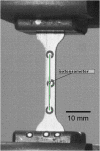
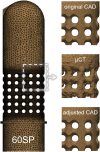
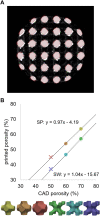
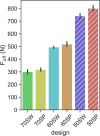
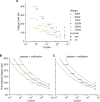


References
-
- Benedetti M., Du Plessis A., Ritchie R. O., Dallago M., Razavi S. M. J., Berto F. (2021). Architected cellular materials: a review on their mechanical properties towards fatigue-tolerant design and fabrication. Mat. Sci. Eng. R. Rep. 144, 100606. 10.1016/j.mser.2021.100606 - DOI
-
- Chakraborty A., Datta P., Majumder S., Mondal S. C., Roychowdhury A. (2020). Finite element and experimental analysis to select patient’s bone condition specific porous dental implant, fabricated using additive manufacturing. Comput. Biol. Med. 124, 103839. 10.1016/j.compbiomed.2020.103839 - DOI - PubMed
-
- Dallago M., Fontanari V., Torresani E., Leoni M., Pederzolli C., Potrich C., et al. (2018). Fatigue and biological properties of Ti-6Al-4V ELI cellular structures with variously arranged cubic cells made by selective laser melting. J. Mech. Behav. Biomed. Mat. 78, 381–394. 10.1016/j.jmbbm.2017.11.044 - DOI - PubMed

